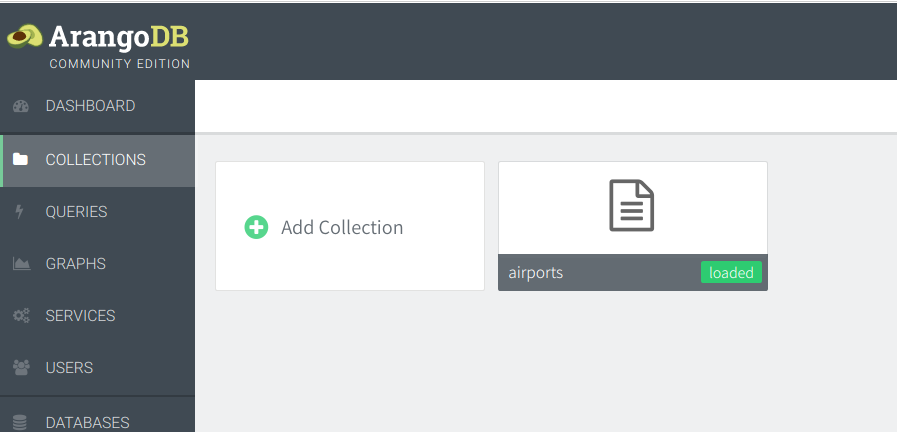

- Arangodb ui how to#
- Arangodb ui install#
- Arangodb ui update#
- Arangodb ui password#
- Arangodb ui free#
Added the atp-casbin package for the IDM. Configured the theme setup & the style fix for the material ui components. Basic instructions to use this boilerplate ( README.md) added. Using components styles from the theme setup. Arangodb ui how to#
How to create,test and publish a NPM package in react.
Arangodb ui update#
Then, login into the NPM site and check the version update there.įor further more details refere the below link NodeJS server back end ArangoDB data store RESTful-APIs with JSON representation (JSON Schemas coming soon) (Front end Web UI built on Bootstrap. Finally run npm publish -access public to publish. Then login to the NPM account using the below command (ignore if you already logged in) npm login It asks the NPM credentials. npm version major - For a completed feature. npm version minor - For a new component addition. Its supporters state that developers can build high performance applications on top of ArangoDB using a convenient SQL-like query language or JavaScript extensions. Arangodb ui free#
To publish the package to NPM follow the below setps ArangoDB is a distributed free and open-source database with a flexible data model for graphs, documents, and key-values. export export default App To publish the package to NPM.Export the component in the index.js file.It does not provide features like syntax highlighting however.

If you are a developer, you might prefer the shell over the GUI. There is also arangosh, a synchronous shell for interaction with the server. Hence it can be customized based on the project The server itself ( arangod) speaks HTTP / REST, but you can use the graphical web interface to keep it simple.
For the styling, only use material theme by using the useTheme() hook for both material ui components & also inline styles. To quote the GraphQL documentation: If the only thing we could do was traverse objects and their fields, GraphQL would already be a very useful language for data fetching. Customize the default theme of the package (If needed) The ArangoDB GraphQL library allows you to apply filtering on any field in your schema by adding optional arguments to the field. Overall Steps to bring the functional components of the package to the UI Builder If everything is okay, follow the below instructions to publish the package (To publish the package to NPM). Now run npm run dev to test the component. Functions: Coordinator Dashboard: Click on a Coordinator will open a statistics. Import the newly created component in the playground/src/App.js file The overview shows available and missing Coordinators and DB-Servers. 
Export the created component in the src/index.js file.Create the component following the below structure (Functional Component Structure).You can remove the components you don't need from the src/components.Modify the name, description & dependencies in the package.json and also replace the functional-components-boilerplate in the dependencies of the playground/package.json with your package name.
Arangodb ui install#
Run npm run i-all to install the dependencies. 
The User can then choose to remove it from the list.React & Material UI NPM package boilerplateĪ shareable Material UI component library with a playground folder to live-test components as you are developing them.
When a unit is removed in cluster mode, The UI will still show this node in his cluster but with an exclamation mark next to it. If a unit was removed while ArangoDB was running in cluster mode, Then both of the units will get in a blocked state. If a unit was added and the model upgraded from 1 to 2 units, then the first unit that was created will be available in standalone mode while the second unit will get in a blocked state. If a model contains 2 units then there are two possible situations on how the charms will behave. This charm uses the default configuration for cluster where every unit will act as DB server and Coordinator. The ArangoDB charm supports clustering but will need at least 3 units to work in cluster mode. Arangodb ui password#
If the root password is not provided in the config.yaml, then the root password will be auto-generated and will be shown in the status of the charm. This charm installs andĭeploy the ArangoDB charm with the following: juju deploy cs:~tengu-team/arangodb-1 ArangoDB is a native multi-model, open-source database with flexibleĭata models for documents, graphs, and key-values.








 0 kommentar(er)
0 kommentar(er)
